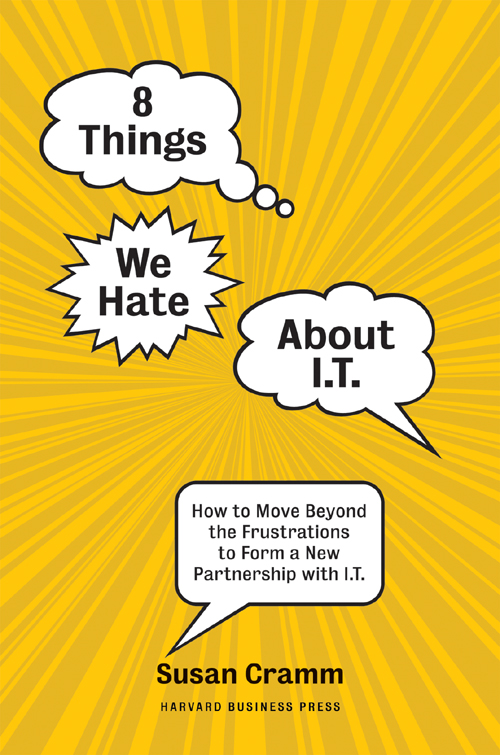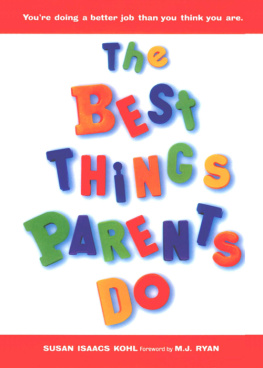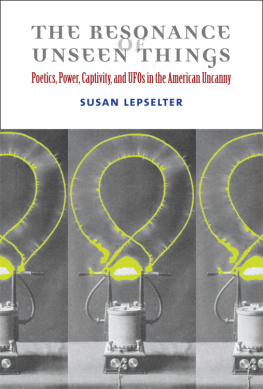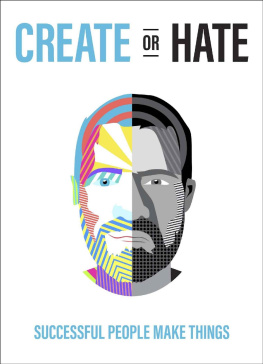Susan Cramm - 8 Things We Hate About IT
Here you can read online Susan Cramm - 8 Things We Hate About IT full text of the book (entire story) in english for free. Download pdf and epub, get meaning, cover and reviews about this ebook. year: 2010, publisher: Harvard Business School Publishing Corp (Perseus), genre: Business. Description of the work, (preface) as well as reviews are available. Best literature library LitArk.com created for fans of good reading and offers a wide selection of genres:
Romance novel
Science fiction
Adventure
Detective
Science
History
Home and family
Prose
Art
Politics
Computer
Non-fiction
Religion
Business
Children
Humor
Choose a favorite category and find really read worthwhile books. Enjoy immersion in the world of imagination, feel the emotions of the characters or learn something new for yourself, make an fascinating discovery.

- Book:8 Things We Hate About IT
- Author:
- Publisher:Harvard Business School Publishing Corp (Perseus)
- Genre:
- Year:2010
- Rating:5 / 5
- Favourites:Add to favourites
- Your mark:
- 100
- 1
- 2
- 3
- 4
- 5
8 Things We Hate About IT: summary, description and annotation
We offer to read an annotation, description, summary or preface (depends on what the author of the book "8 Things We Hate About IT" wrote himself). If you haven't found the necessary information about the book — write in the comments, we will try to find it.
Susan Cramm: author's other books
Who wrote 8 Things We Hate About IT? Find out the surname, the name of the author of the book and a list of all author's works by series.
8 Things We Hate About IT — read online for free the complete book (whole text) full work
Below is the text of the book, divided by pages. System saving the place of the last page read, allows you to conveniently read the book "8 Things We Hate About IT" online for free, without having to search again every time where you left off. Put a bookmark, and you can go to the page where you finished reading at any time.
Font size:
Interval:
Bookmark:

Copyright 2010 Susan Cramm
All rights reserved
No part of this publication may be reproduced, stored in or introduced into a retrieval system, or transmitted, in any form, or by any means (electronic, mechanical, photocopying, recording, or otherwise), without the prior permission of the publisher. Requests for permission should be directed to permissions, or mailed to Permissions, Harvard Business School Publishing, 60 Harvard Way, Boston, Massachusetts 02163.
First eBook Edition: March 2010
ISBN: 978-1-4221-3166-4
Three rules of work: Out of clutter find simplicity;
from discord find harmony; in the middle of
difficulty lies opportunity.
Albert Einstein

Getting what you want out of information technology is difficultvery difficult. By the time its delivered, it disappoints. Its always too little, too late, for too much. When we finally get new technology, we dont use it. My HDTV has network connections that will remain forever disconnected. On average, Microsoft Word users master only about 5 percent of the available features, and the typical company exploits only a small fraction of the functionality available in its enterprise resource planning (ERP) software. Once we have it, we want to replace it. Ive hated my laptop since the day I bought it. My husbands new iPhone is like a siren calling me, even though my BlackBerry arrived only a few months ago. Old is OK for wine and furniture, but new technology, by definition, must be betterat least until we get it. Lets face it: we are commitment-phobic when it comes to IT.
For personal uses, troubled technology isnt a problem, its an annoyancesomething to complain about but not fix (did I mention that the DVD drive on my laptop has been broken for two months, even though it is still under warranty?). If we cant Ctrl-Alt-Delete the problem away, we can always go shopping. Smart phone freezing? Buy another one. Laptop slowing down? Buy an Apple. Hard disk crash? Subscribe to an online backup service. Sure, its expensive, but we want the new stuff anyway. After all, its bright and shiny and includes lots of whiz-bang featuressome that we may actually use.
Businesses cant buy their way out of troubled technology. We are already spending too much of our precious capital on technology, losing billions on failed and troubled projects, and jeopardizing our top-line revenue because of systems degradation, downtime, and inadvertent leaks of our customers private information. Our business processes are embedded in brittle and complex technology, and the future of our companies depends on transforming this mess into digitized capabilities that will allow us to rapidly innovate and propagate new products, services, and business models. A response to my blog perfectly articulated the challenge facing us: Heres a scary thoughtwhat if this is as good as it gets? My sense is that complexity is going to keep growing faster than our ability to manage it.
No doubt the current model is ripe for an overhaul. Its hard to remember the time when criticizing IT was controversial. The classic Harvard Business Review article IT Doesnt Matter resonated because it underscored the pervasive belief that IT mediocrity is the norm.If you take a poll, youll find that almost every IT professional across the globe agrees. The problem is that the IT organization is so busy managing the trees, it cant think about the forest. IT leaders spend the vast majority of their time grappling with lights-on activities and the remainder fielding enhancement and project requests that overwhelm available resources.
Eventually, we will learn how to manage technology rather than let technology manage us. In ten or twenty years, we will be well on our way to having Lego-like technology, available on a pay-per-use basis, that connects anyone and anything, anytime, anywhere. These Lego blocks will be in the hands of IT-smart, business-leader digital natives (versus digital nomads), allowing them to fulfill their day-to-day IT needs on their own. When this all comes together, the IT organization will finally be positioned to enable rather than inhibit change.
Until this glorious day arrives, you have a job to do. And thats what this book is abouthelping you get what you want out of technology by moving beyond frustrations and forming a new partnership with IT.
When it comes to IT, business leaders feel like strangers in a strange land. Getting projects approved and funded means attending a dizzying array of meetings and seemingly endless working and reworking of business cases. Starting projects requires a breadth of specialists that rivals the holiday party list at the Mayo Clinic. Defining functionality and detailed design heralds a litany of requirements and architectural documents that require multiple levels of business and IT approvals. Developing the solutions entails not only programming but also endless change requests, tests, documentation, and training classes.
At turnover, project teams disband and your new technology is thrust into the cold arms of operations, where communications are routed through a call center and documented in incident reports that must be escalated before resolution. You know that, deep in the bowels of a server somewhere, your system is running, a sequence of zeroes and 1s zipping through integrated circuits, miraculously delivering critical information to your sales force when they need it, wherever they are. But the accomplishment feels hollow in light of the painful process, the mountain of paperwork, and the fact that the project blew by the estimated budget and timeline by a significant factor.
Its overwhelming and more than a little scary. Technology is a key to your success, but you dont have a clue about how to manage it. Its tempting, but not productive, to blame the IT organization. IT delivers complex services to relatively unsophisticated and demanding customers who expect IT to serve their individual interests without regard to the benefit and risks to the enterprise. Much of what frustrates business leaders about the IT organization is their inability to exert more control over the IT assets that fuel the business and navigate the bureaucracy that has been put in place to ensure that the whole of IT is greater than the sum of its parts.
When frustrated, we all tend to blame others. Its difficult to see the larger context and easier to cast negative attributions and
None of the mental models is right, but neither are they wrong. The key to reconciling them is to shift your perspective, look through the eyes of your partners in IT, and understand the context in which they operate. Doing so will allow you to develop a single version of the truth and will give you the insight necessary to change the relationship for the better. No rational person hates the people in IT (or the business), but everybodyIT and business leaders alikehates the current IT system. Even ITs powers that be are frustrated. Case in point, a Fortune Global 200 CIO described IT to me as a sucking vortex.
TABLE I-1
The 8 hates
| Line leaders hate when IT | IT leaders hate when the business | |
| Service or control | Is overly bureaucratic and control oriented | Makes half-baked requests and is clueless about impact |
Font size:
Interval:
Bookmark:
Similar books «8 Things We Hate About IT»
Look at similar books to 8 Things We Hate About IT. We have selected literature similar in name and meaning in the hope of providing readers with more options to find new, interesting, not yet read works.
Discussion, reviews of the book 8 Things We Hate About IT and just readers' own opinions. Leave your comments, write what you think about the work, its meaning or the main characters. Specify what exactly you liked and what you didn't like, and why you think so.









